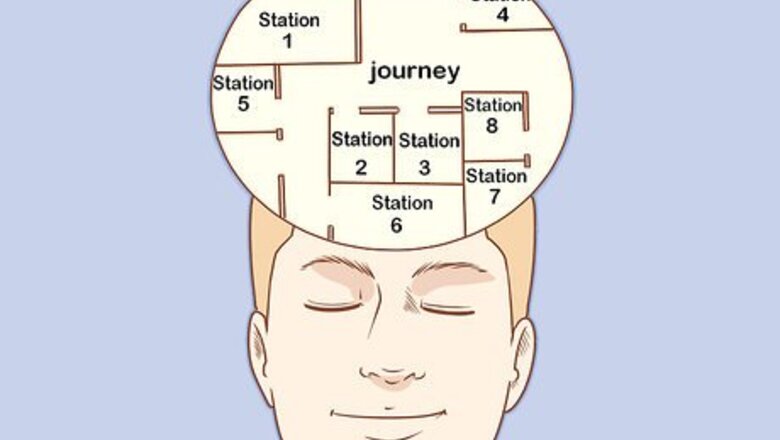
views
X
Research source
and the Merriam Webster Unabridged Dictionary contains about 470,000 entries.[2]
X
Research source
The current world record for the number of entries memorized by an individual is held by Mahaveer Jain of India, who can recall 80,000 individual entries, as well as their sequence and page numbers in the dictionary. Through the use of the memory palace method and the use of other memorization techniques like flashcards, you can train your mind to improve your memory of words in the English dictionary.
Using the Memory Palace Method
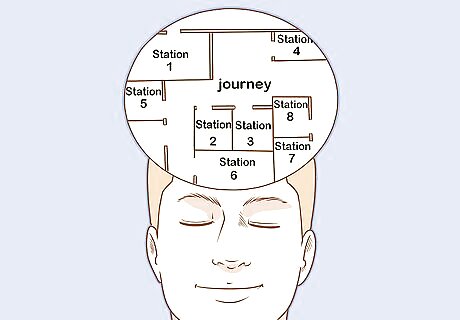
Be aware of how the method works. The memory palace method is a type of mnemonic. This is a learning device that can help you recall difficult information. Everyone has a “memory palace”, which is a space in your mind where you build memories and store information, from images of the past to words and phrases. Think of your mind as one big memory palace. Within the palace, there are “stations” or separate spaces, like a bedroom or a sitting room. The distance between these rooms is called a “journey”. As you construct your memory palace, you can leave words and phrases at these stations and then pick them up later when you take a journey through your palace to retrieve them. This method will help you remember words from a text, such as a dictionary, in a limitless way, as there is no limit to how many rooms or spaces you can add to your memory palace. The memory palace method is not just made for visual learners. Everyone has the ability to picture a palace or a home and the rooms or spaces in a palace or home. You can use your own home as a way to map out your memory palace, or create your own palace out of a combination of several familiar spaces.
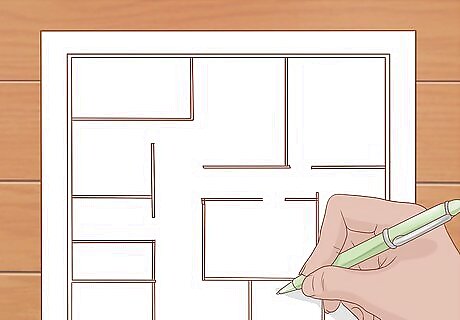
Draw a floor plan of your memory palace. Start by taking out a sheet of blank paper and a pen or pencil. Think about a home or space you are familiar with, like your family home, your school or your workplace. Choose a space that has multiple rooms. You can also combine spaces to form the layout of your memory palace. Start with the largest rooms. Arrange the rooms so they are in a circular or half circle shape with at least two exits. For example, your floor plan could include four bedrooms, three bathrooms, a large kitchen, a large living room, and a den, as well as long areas for a front yard and a backyard. Try to fit as many rooms as possible on the floor plan, without cramming rooms together. Leave enough space between the rooms to make a pathway.
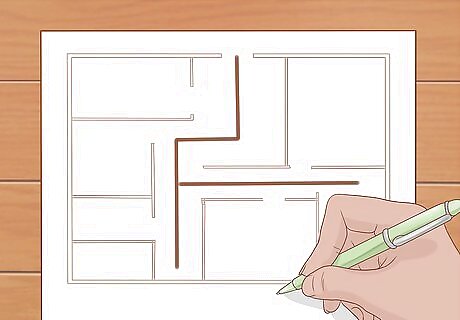
Make a linear path through the floor plan. You want to make sure you can draw a linear path through the space. You should be able to move through the memory palace without reaching a dead end. This will allow you to move from station to station in the memory palace easily and avoid overlapping or getting trapped in one station. Use a pen to draw a clear linear path from one end to other end of the floorplan so it flows in a continuous path. If you were walking through the floorplan, you should be able to access every room or station on the path and move in a fluid line through the palace.
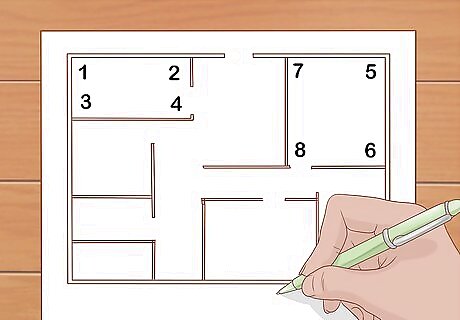
Number your “stations”. Starting with “1”, number your stations in order, moving from one end of the floorplan to the other end. Try to fit at least four numbers in each corner of each room or station. For example, you may have 1,2,3,4 in one room on each corner of the room and then 5,6,7,8, in the next room on each corner of the room. This will allow you to store more than one word in a room and maximize the space in each room or station in the palace. Try to number up to at least “50” in your memory palace.
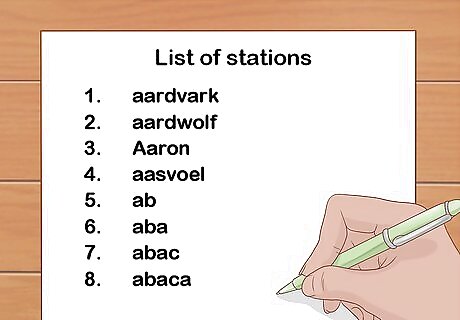
List your “stations” and add corresponding words from the dictionary. Open a word document or use pen and paper to make a list of the stations on the floor plan. Include the numbers associated with each station or room. For example, “Bedroom” may have 1,2,3,4, listed underneath it and “Bathroom” may have 5,6,7,8, listed underneath it. Open the dictionary and choose words you would like to memorize. For example, you may start at the beginning of the dictionary with the letter “a”. Place the words in the list of stations, one for each number. If you are using “a” words in the dictionary, such as “aardvark, aardwolf, Aaron, aasvoel”, you will place them on lines 1,2,3,4 in the “Bedroom” of the memory palace. You can then place the next set of “a” words, “ab, aba, abac, abaca”, on lines 5,6,7,8 in the “Bathroom” of the memory place.
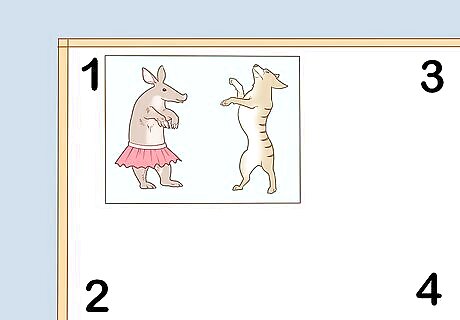
Apply imagery and action to each word using the memory palace. Once you have situated the words from the dictionary in the stations of your memory palace, you can encode them so you remember where they are located. Do this by creating bright, colorful, and weird images that involve each word and associate them with a particular room in the memory palace. For example, you may be trying to remember the set of words: “aardvark, aardwolf, Aaron, aasvoel”. You may create an weird and bold image that combines these words, such as an aardvark in a tutu dancing with an aardwolf named Aaron in your bedroom. The aardwolf may be singing to an aasvoël perched in the corner of the bedroom by the window. You can then imagine all four words existing together in one room of your memory palace and you likely will not forget the image of them interacting with each other in such a particular way. You can then add these images to your list of rooms to keep track of the images associated with the words in a particular room. Try to keep the imagery and action to one to two sentences so they are easy to remember.

Add more rooms to your memory palace as you memorize more words. As you work your way through the dictionary, you can add more stations or rooms to your palace. Focus on creating images with action for each set of words (3-4) so you can recall a set of words by picturing the room in your memory palace. This will strengthen your long term memory of each set of words and allow you to recall them easily.
Using Flashcards
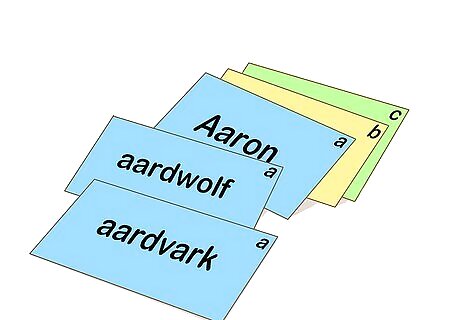
Create your own flashcards. Flashcards have been used in education for decades to help students remember vocabulary terms and definitions. Because you are focusing on memorizing the words in the dictionary, you can write each term on a flashcard and use the flashcards to practice remembering each term. You can use plain white flashcards or colored flashcards for terms that are more difficult for you to remember. You may also want to use colored flashcards to signify each letter of the alphabet. For example, blue flashcards for all “a” letters, yellow flashcards for all “b” letters, green flashcards for “c” letters, etc. Write down one word per flashcard. Follow the word order of the dictionary and write them in order on the flashcards. For example, “aardvark, aardwolf, Aaron, aasvoel” should follow one after the other, one word per flashcard.
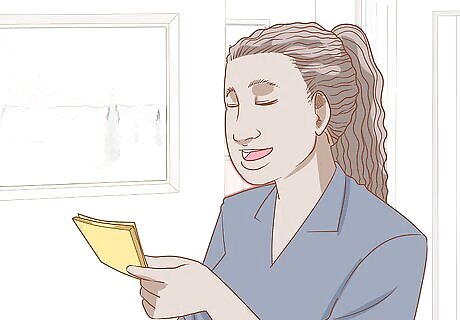
Make a practice schedule. Once you have made the flashcards, put them to use by setting aside one to two hours a day studying the flashcards. Do this in sections, focusing on 50 cards at a time. To strengthen your long term memory, you should review the cards you have already studied so you can work your way up slowly to remembering 50 cards, then 100 cards, then 150 cards, etc. Another technique is to practice with the flashcards by placing them in areas around your room or home that you use often. Tape them on the walls, on mirrors, or on any surface that you look at every day. This will force you to study them throughout the day and help you remember them.

Test your memory with a partner. Ask someone to help you review the flashcards by testing your memory of the words on the flashcards. Start with 20 cards at a time, and have the person ask you to name each word on the card. Say the words out loud to reinforce your memory of each word. Over time, you can have the person speed up how fast they ask you to name each word so you improve your ability to memorize each word quickly and in succession. Once you become confident with 20 cards, increase the amount to 50 cards and ask the person to quiz you. Work your way to 100 cards and then 150 cards. Add more flashcards as you work your way through the dictionary, but be sure to circle back and repeat past words so you can remember them long term.











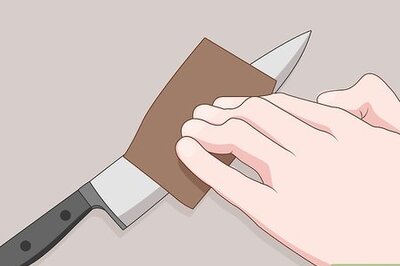
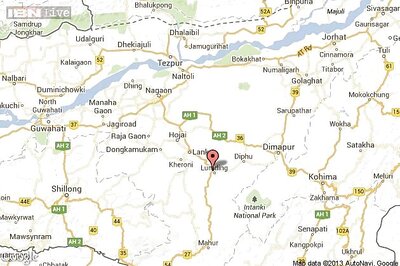






Comments
0 comment